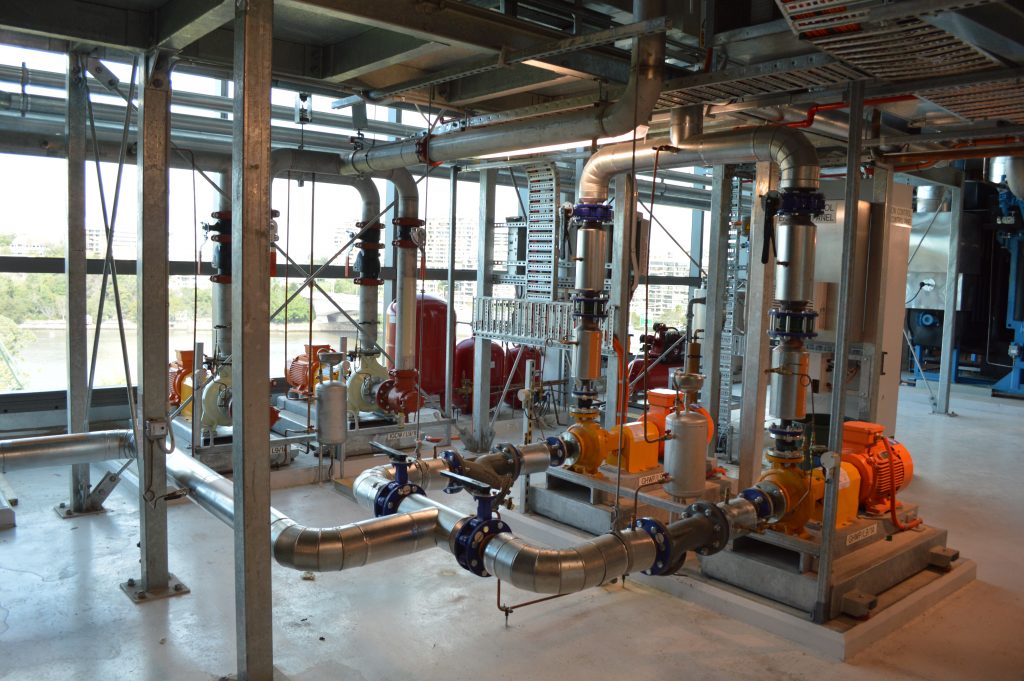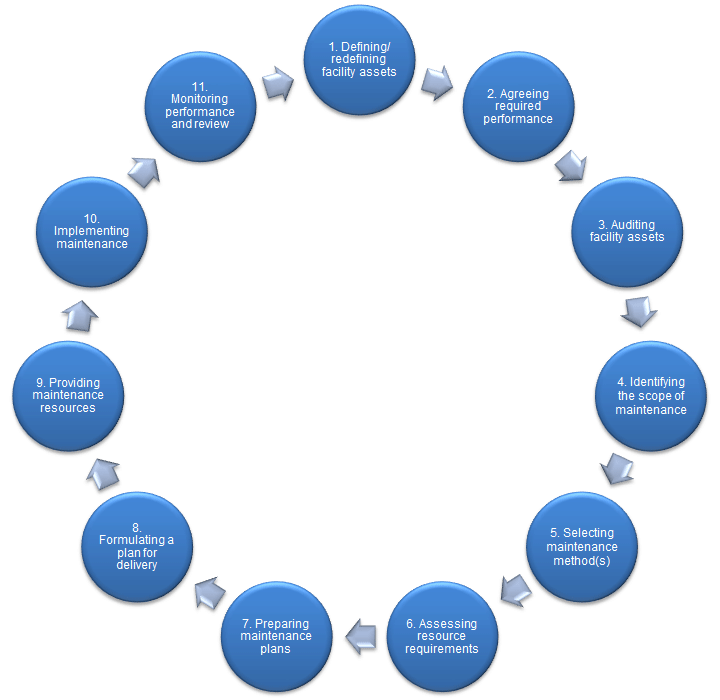Facilities maintenance management (BS 8210)
Facilities management owes much of its existence to building maintenance management, which continues to form a significant part of the workload of the facilities management sector. The publication of BS 8210 Facilities maintenance management – Code of practice provides guidance on how to achieve successful maintenance outcomes for a range of facilities.
The need for this standard
Some things change little over time; others can change dramatically. Facilities today can be characterised by complex installations based on state-of-the-art technology where the need is to create internal environments that are optimal for users. Maintenance management is a key component of any successful strategy for managing an organisation’s assets and facilities.

The standard focuses on matters of a strategic and tactical nature, whilst considering the practical importance of decisions on the operational level. At the same time, a broader range of facility assets has been taken into account. The importance of regular and planned maintenance as a value adding activity is highlighted, because facility assets have to be maintained to ensure that they fit their intended purpose; are likely to perform their function throughout their intended life in a safe and efficient way; and that their value is protected.
Ignoring maintenance runs the risk of failure in systems and of components, incurring needless additional cost, as well as threatening business continuity. Lack of maintenance can arise, in part, from a belief that a facility is an asset with a very long life that deteriorates gradually. Even so, failure to maintain the structure and fabric can affect function and presents safety risks in addition to reducing the value of the facility as an asset.
Scope of guidance
The standard outlines a process approach to maintenance management on the strategic and tactical levels with links to operational activities. The intention is to assist owners, operators and tenants, and their professional advisors in formulating a strategy and policy for maintenance management so that facility assets continue to perform as intended, retaining their asset value at minimal cost.
Any organisation that has responsibility for a facility needs a well-defined maintenance strategy – one that supports its goals. A poorly defined strategy could have significant adverse safety and commercial consequences for the organisation. The effectiveness of an organisation to fulfil its environmental and social responsibility commitments and targets is also dependent upon an effective maintenance strategy. Since targets are subject to revision and are progressive, a static maintenance strategy is unlikely to meet the developing needs of the organisation. A review process, as an integral part of the maintenance strategy, is necessary as changes arising from health, safety, security and environmental considerations can impact the way in which maintenance is undertaken.
Maintenance methods
A facilities maintenance strategy can embody different maintenance methods, for example scheduled, condition-based and unplanned or a combination of them and others. Preventive maintenance includes scheduled maintenance, condition-based and shutdown maintenance; whereas, corrective maintenance includes unplanned maintenance, breakdown and emergency maintenance. Not all of them are likely to be appropriate, although they serve as the basis for exploring options once needs have been determined. The standard outlines the key steps that the organisation should take to identifying the method(s) that best satisfies its requirements.
The standard is broadly based and also covers maintenance planning and the maintenance process (see below), financial considerations, factors affecting maintenance, inspections, risk assessment, performance management, information management, asset register, spare parts inventory and computer-aided maintenance management systems.

Maintenance planning
The maintenance requirements of a facility are, to a large extent, a consequence of its original design and construction. Inefficient design, inappropriate specifications and poor quality work can result in faults that are subsequently difficult and expensive to diagnose and remedy. Inappropriate maintenance and repairs amount to unnecessary cost and inconvenience, which can be compounded by further attempts to remedy faults.
Approaches to facilities maintenance management should adopt a whole lifecycle perspective wherever possible to guide policy formulation in general and financial decision-making in particular. This approach is necessary in order to protect both the asset value and the resource value of the facility. With this in mind, the organisation should assess the benefits of maintenance planning, basing the assessment on the following:
- its contribution to the organisation’s goals;
- satisfaction of stakeholder interests;
- effectiveness of the facility in supporting the organisation’s operational plans;
- availability and reliability of the facility at minimal cost;
- capital and tax planning;
- asset management strategy;
- protection of the value of facility assets;
- required environmental performance; and
- results of maintenance benchmarking.
Maintenance plans should therefore be prepared in consultation with stakeholders, taking account of the organisation’s requirements for production and operational demands and constraints. It will also be necessary to consider the organisation’s financial and taxation position, since budgets have to be provided and most often on a multi-year basis.
Maintenance process
Facilities maintenance should be managed in an integrated manner and follow a structured process that takes into account the following key stages.
- Facility assets required to support the core business and the delivery of services should be defined.
- The required level of facility asset performance, including performance indicators, should be agreed.
- The condition and sufficiency of facility assets for their intended purpose should be audited.
- The scope of the maintenance required should be identified.
- Appropriate maintenance method(s) from amongst those available should be selected.
- The resources required for the selected maintenance method should be assessed.
- Maintenance plans and budgets should be prepared to cover the required scope of services over the short, medium and long term.
- A tactical plan for delivery of maintenance should be formulated.
- The resources to deliver the scope of maintenance should be provided.
- Maintenance plans and programmes of work should be implemented.
- Performance monitoring, review and control of maintenance plans and programmes of work should be carried out.
Information and data gathered from this process should be used to re-inform the organisation’s need for, and use of, facility assets during this, and any future iterations, of the maintenance planning process.
Finally
There are a number of standards that deal with the more detailed, technical aspects of maintenance. BS 8210 sets the strategy for maintenance by guiding organisations towards an appropriate arrangement.
BS 8210:2020 is available from the BSI bookshop.
